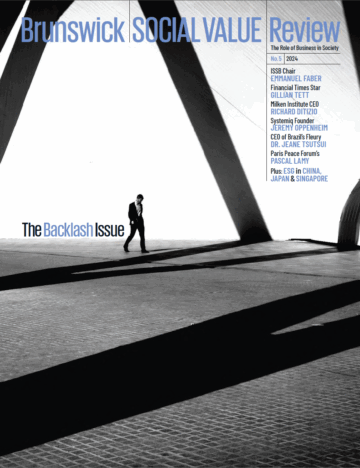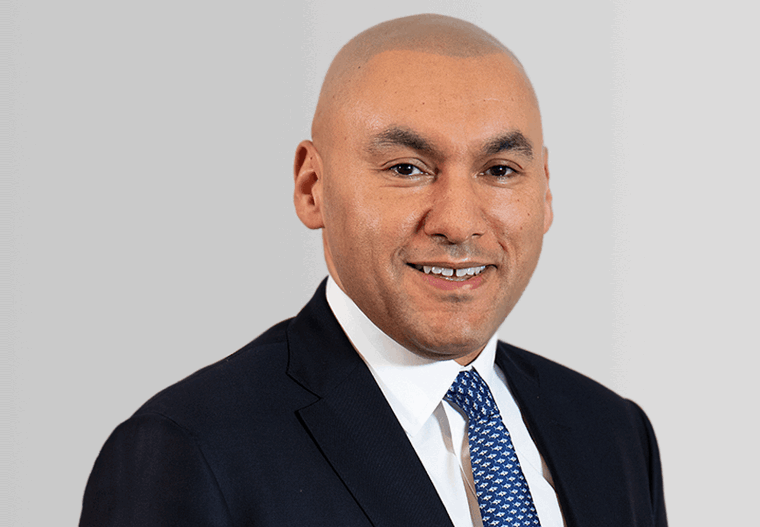ESG analysis is establishing itself as core business practice despite entrenched efforts to dismiss it, say Brunswick’s Dan Lambeth & Kanhai Parasharya.
In May 1847, the head of the Vienna Maternity Hospital, Ignaz Semmelweis, insisted that medical students should wash their hands before entering a maternity clinic because it would help reduce maternal mortality. His experiment resulted in far fewer women dying. However, the message Semmelweis carried to his colleagues—that “death particles” carried by “unholy” unwashed hands were the prime cause of then-rampant childbed mortality—was rejected and ridiculed, and he was dismissed from the hospital. It would be another 40 years before the practice of handwashing was accepted and adopted.
Semmelweis’s story is a lesson for both sides of the ESG debate: Clear communication of facts is the key to broad acceptance of potential good. Semmelweis had more than a revolutionary idea to save lives—he had data to back it up. Yet he failed to convince his fellows in the profession who were predisposed to trust the status quo.
ESG represents a financial breakthrough that can challenge traditional investment theses, aspects of which may be based on dogma and lack of transparency. Many are realizing we need to go beyond such assumptions and semantics, and fuse the best of traditional investment outlooks with relevant environmental and social factors. There is growing evidence of ESG analysis becoming standard practice across different financial situations.
The number of ESG-related deal announcements has risen sharply in recent years, with a record number in 2021. In these M&A deal announcements, specific references to ESG, sustainable finance or other sustainability issues figure prominently as a primary rationale or component of the deal. Even as high interest rates slowed down dealmaking generally, ESG-related deals rose in 2023 compared to 2022.

M&A DEALMAKERS now review ESG issues as standard practice. Investors have canceled M&A deals or reduced purchase prices due to material findings related to ESG. That’s because focusing on ESG factors in the due diligence process enables acquirers to better identify financial risks and opportunities—not to mention comply with regulatory requirements. Thorough ESG due diligence identifies issues that are relevant to a wide range of stakeholders, including the pressure groups and NGOs who may oppose a deal. Shareholders are more engaged and willing to push back on proposals for ESG reasons. Robust integration of environmental and social factors in deal strategy can offer a path to resilience in the face of resistance.
In addition, ESG is relevant for price and valuation. As green M&A activity rises, competition for environmentally friendly assets increases, driving up prices. Green targets with better growth prospects command higher valuations.

COMPANIES PREPARING FOR IPOs are featuring ESG performance prominently in roadshow marketing. Neglecting sustainability considerations risks failing to engage ESG-focused investors. ESG funds in Europe in particular now account for over 20% of asset management market share.
In a recent European study, a link was identified between ESG communications and the pricing and valuation of IPOs. The study found that “a significant relationship” between an IPO’s pricing and evaluation and its ESG communications. Another study from the US revealed that voluntary ESG disclosure reduces the risk of IPO failure and enhances long-term IPO performance. The study also suggested that IPOs with higher ESG scores are less prone to failure, with social and governance performance playing a significant role. In the US in 2023, more than 20% of new securities filings with the SEC included references to ESG.

The Pushback & The Reality
Clearly, not all investors are sold on ESG. In 2023, more money was pulled from global ESG funds than went into them. A 2019 study by researchers at the University of Chicago questioned whether ESG funds outperform their counterparts, while American investors have gone to court arguing that ESG investing violates fund managers’ legal obligation to maximize investment returns.
Yet certain major investors now exclusively evaluate companies based on specific ESG criteria, directly influencing a company’s access to investment opportunities. ESG ratings offered by companies such as MSCI, Sustainalytics and ISS are used to determine ESG Indices (the basis for ESG passive funds). Fund managers are developing increasingly sophisticated proprietary methodologies for ESG portfolio decision-making. Companies with low ESG ratings or involved in ESG controversies risk damage to market capitalization and reputation, as well as exclusion from investment by some investors.
Research by Bank of America found that ESG funds are quick to cut their exposure to controversial stocks—a 2023 analysis found that 65% of ESG funds liquidated or cut their position in a stock by one-quarter after an ESG controversy.

Rating agencies, proxy advisors, sell-side analysts and regulators all require company information on factors such as climate, water, biodiversity, consumer affairs and board diversity. Little wonder that ESG-leading companies are resourcing senior roles and functions to ensure effective reporting in support of investor engagement, share price performance and cost of capital. A company’s entire value chain is impacted by ESG considerations.
While 2024 saw a marked drop in ESG-related shareholder resolutions, that might be because ESG issues are being better managed both by companies and asset managers—better ongoing engagement between companies and investors means fewer difficult, controversial resolutions at AGMs. Another reason for a drop in shareholder proposals could be that asset managers want to avoid the political risk of appearing to “boycott” certain stocks. Instead, they are engaging with companies. While environmental activism has been more prominent in recent years, social activism is set to drive the ESG agenda with many investors now engaging on issues such as diversity and employment policies.
Communication Matters
Semmelweis’s observations about the importance of handwashing were a breakthrough, yet he himself may have helped prevent its adoption. His data set was limited to outcomes in his own maternity ward over one year. His language describing the benefits was imprecise. Personally, he was described as intolerant of criticism and capable of distorting others’ views. All of that made it easy for the medical community to dismiss his observations for another four decades.
Many mothers died needlessly despite a known, available alternative. It is difficult to imagine smart, decent doctors defending such an unacceptable status quo. ESG advocates should both take heed and take heart: Data and reality have a way of winning in the end, but poor communications can create costly delays.
Companies today risk repeating one of Semmelweis’s mistakes: relying on others to perceive data objectively, regardless of how it’s presented. The importance of a strong ESG narrative, underpinned by clear evidence, has grown along with the backlash. Accumulating credible research and analysis can allow ESG to take its place alongside traditional financial and investment theses, rather than appear to replace them.
—
Additional reporting by Kanhai Parasharya, an Executive in the Financial Practice Group in Mumbai.
More from this issue

The Backlash
Most read from this issue






